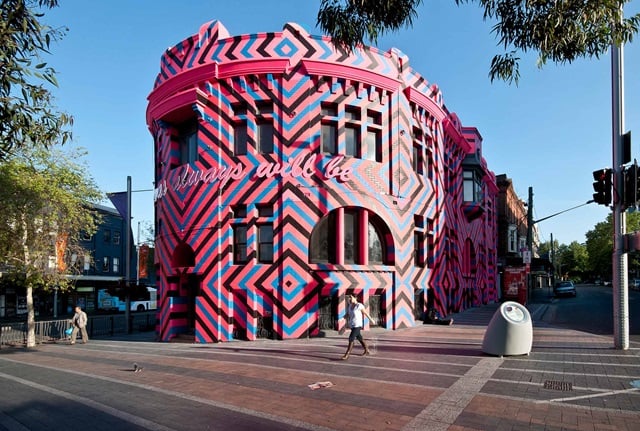


Baroque style sandstone drinking fountain gifted to the public.
Artwork description
This is the second of 2 Frazer drinking fountains donated to the City of Sydney by John Frazer MLC, a wealthy business owner and philanthropist. The fountains are both made of fine Pyrmont sandstone and were installed in 1881 and 1884 respectively. While both fountains were designed by City Architect Thomas Sapsord and sculpted by Mittagong sculptor Lawrence Beveridge, they're very different in style.
This fountain was erected in 1884 at the outer perimeter of the Domain on St Mary’s Road, opposite the northern end of St Mary’s Cathedral. Its Baroque style is very ornate and contrasts with the simple Gothic lines of the first Frazer Fountain, located in Hyde Park. Like its forerunner, this fountain features specially imported Aberdeen granite in the water basins.
The dolphin taps and drinking cups that once featured have long since vanished but the high sheen of the granite basins remains. The original handrail surrounding the fountain has also been removed, though a section of it was still standing in 1983. Unlike the first fountain which has had its taps and drinking cups replaced with a bubbler in keeping with changing attitudes towards health and hygiene, a resolution of the Council in 1936 to replace this fountain’s dolphin taps was not implemented.
Significance
The 2 Frazer fountains demonstrate aspects of daily life in the 19th century, particularly the supply and use of water, and public health and hygiene. They're also an indicator of the philanthropy demonstrated by the wealthy at the time.
In the early 1880s, Sydney’s piped water supply was unreliable and largely restricted to the wealthy. Occasional crises in supplies of water were only abated after the completion of the Nepean system in 1888. Drinking fountains in public thoroughfares and parks were common. Hygiene standards were also far less stringent than today as illustrated by the use of communal cups that dangled at the sides of the basins. For philanthropists, the masonry of the fountains afforded a publicly visible space on which their name and good works could be recorded forever.
Designer and sculptor
Both Frazer fountains were designed by Thomas Sapsford and sculpted by Lawrence Beveridge. Sapsford served as City Architect for the City of Sydney from 1881 to 1885.
John Frazer
John Frazer’s gift to Sydney came at the end of a comparatively short but eventful life. Born in Ireland in 1827, he arrived in Australia, penniless, in 1841, aged 14. Frazer set up his own wholesale grocery business in 1847. By the late 1850s, he had moved into partnership and larger premises, becoming a land speculator in the 1860s and opening 2 large commercial premises in Sydney by the early 1870s.
He had successfully undertaken a number of directorships. In 1874, by the time he retired from his own business concerns, he was nominated to the NSW Legislative Council. His philanthropic activities were also wide-ranging by this stage, and included gifts to religious, cultural and educational causes.
Inscriptions
The first inscription is set high up, using raised lettering on a slab below the crenellations. It reads:
The second inscription is on the rim of the granite basin, and alternately reads ‘Aquarius’ and ‘Arethusa’.
The third inscription is on the base of the fountain. It reads:
L. Beveridge, Sculptor





